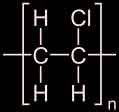|
|
›
PVC-Coated RF, Hot Air, and Wedge Weldable Polyester Webbing
Nothing stays the same. New companies, new products, new needs tend to surprise us every day. What makes sense one day becomes bad news before you know it. What may seem crazy today may become the basis of your survival in the future. We believe that it will be technology and clever technical thinkers who do the most to solve the future problems of the world. Some of the concepts are here already but not fully developed. Many are still hoped-for discoveries in the future. So our intent is to find, support, work with, and work for companies and organizations looking ahead - way ahead.
One of the products we currently rep throughout North America is Pvc-Coated RF. Hot Air, and Wedge Weldable Polyester Webbing, used to reinforce all types of vinly fabric structures.
PVC (polyvinyl chloride) is a versatile polymeric plastic.
 |
В |
PVC, commonly called "vinyl", can be made softer and more flexible by the addition of plasticizers, the most widely used being phthalates, thus offering a strong, flexible, weather resistant, and attractive finish for fabrics used in signs, banners, tents, transportation, and many other applications. PVC is a "thermoplastic" which means that it can be repeatedly heated, softened, and rehardened. This property makes the material highly suitable for various methods used to weld two PCV-coated surfaces together. |
Many industrial fabric companies use welding technology to join panels using overlapped or butt seams. In overlap seams, one sheet of vinyl-coated fabric is welded to another piece, usually of the same type, by laying one sheet on the other along the intended joint with anywhere from a one half to three inch wide contact area. In a butt seam, the two primary sheets are aligned with no overlap and an additional third piece, a narrow strip of a compatible fabric, is welded behind the joint. By thus joining sheets of fabric which are usually woven and coated in sizes no wider than five meters (about 16 feet), fabricators can build many types of industrial barriers, tarps and covers, tents and tensile structures, grand format banners and building wraps, agricultural covers, and other large structures.
To add the strength calculated for properly engineered structures, webbing that is also PVC-coated can be added to seams and edges. Different types of welding equipment can be used for different seaming and edging operations. But the chemical process of marrying two vinyl-coated surfaces is based on having compatible coatings. Thus it is possible to join fabrics with differing internal fabric weaves ("scrims") but with similar outer PVC surfaces. In cases where the scrim of a heavy webbing product is considerably more dense than that of the broad fabric to which it is being welded, it may be necessary to experiment with a variety of intensity and dwell time settings to be sure that the amount of heat needed to weld the webbing is not so great that it could cause damage to the broad fabric.
Because the polyester webbing inside PVC-coated webbing is essentially the same as regular polyester webbing, PVC-coated webbing can also still be sewn using traditional stitching machinery. This method is used in heavy applications such as reinforcing fold-backs behind tent hardware and in lightweight applications such as for smaller signs and banners where the waterproof characteristics of the PVC-coating may be desired but when welding is impractical. Once sewn, PVC-coated webbing offers the advantage that if can be slightly re-melted with a heat gun to seal needle holes.
PVC-coated webbing is available in tensile strengths up to 16,500 lbs. Contact us for the full range of product specs and pricing.
|
|
|
|
| Viewed: 5310 Comments (15) Share this article » |
|
|
|
|



